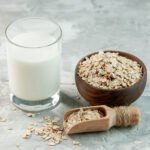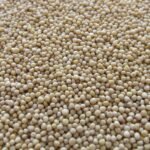Cheese – it’s a delight for the senses and a boon for the body. Join us as we explore the intriguing origins of this dairy delicacy, the diverse forms it comes in, and its impressive health benefits and nutritional profile. If you’re a cheese aficionado or simply curious about food history and nutrition, this guide is just for you!
A Slice of History: Where Does Cheese Come From?
Cheese, with its complex flavors and diverse textures, has been tickling our taste buds for centuries. Originating over 7,000 years ago, it’s thought to have been discovered accidentally when milk, stored in containers made from animal stomachs, curdled due to the natural rennet in the stomach lining. The result? Cheese.
The production of cheese spread from the Middle East to Europe during the Neolithic Age, later perfected by the Romans. Today, cheese is a universal food enjoyed worldwide, with each region boasting its own specialty cheeses. From the pungent Roquefort of France to the creamy Mozzarella of Italy, the world of cheese is a true culinary wonderland.
Cheese: The Many Forms of This Dairy Delight
Cheese is incredibly versatile and comes in a plethora of forms, making it a star player in many dishes:
- Hard Cheese: Includes Parmesan and Cheddar, perfect for grating or slicing.
- Soft Cheese: Think Brie or Camembert, often enjoyed spread on bread.
- Fresh Cheese: Such as Mozzarella or Ricotta, prized for their delicate flavors.
- Blue Cheese: Stilton or Gorgonzola, known for their strong flavors and blue veins.

No matter the type, cheese brings a wealth of flavors and textures that can enhance any meal.
Health and Nutritional Benefits of Cheese
Cheese isn’t just delicious, it’s nutritious too! It’s packed with essential nutrients, including protein, calcium, and vitamins. Plus, it’s a good source of probiotics, which can promote a healthy gut.
What’s more, cheese is high in fat and protein, making it a good option for low-carb and ketogenic diets. But keep in mind, moderation is key – while cheese offers many health benefits, it can be high in calories and saturated fat.
Nutritional Values of Cheese
Below is the nutritional profile for a 100g serving of Cheddar cheese:
| Nutrient | Amount |
|---|---|
| Calories | 403 |
| Protein | 24.9g |
| Carbs | 1.3g |
| Fat | 33.1g |
| Calcium | 721mg |
*Values are approximate
FAQs
1. Can cheese be part of a healthy diet?
Definitely! Cheese is rich in many essential nutrients. However, due to its high calorie and saturated fat content, it’s best consumed in moderation.
2. Is cheese suitable for vegetarians?
Not all cheeses are vegetarian-friendly as some are made using animal rennet. However, many varieties use vegetable or microbial rennet instead.
3. Is cheese gluten-free?
Most cheeses are gluten-free, but some processed cheeses may contain gluten, so it’s always best to check the label.
The Final Spread: Wrapping Up Our Cheese Exploration
In the grand scheme of things, cheese is more than just a tasty treat. It’s a testament to human ingenuity and a powerhouse of nutrition. It caters to a broad spectrum of palates, with a myriad of types to choose from.
So the next time you savor a slice of cheese, remember the journey it has taken – from an accidental discovery thousands of years ago to the cheeseboard in front of you. Enjoy it in moderation, and reap the many health benefits it offers!
Fun Facts:
- The terms ‘Big Wheel’ and ‘Big Cheese’ originally referred to people who were wealthy enough to purchase a whole wheel of cheese.
- There are over 2,000 varieties of cheese available worldwide.
- The largest cheese ever made weighed 57,518 pounds and was cheddar.
Source:
[1] “History of cheese.” Wikipedia, The Free Encyclopedia




